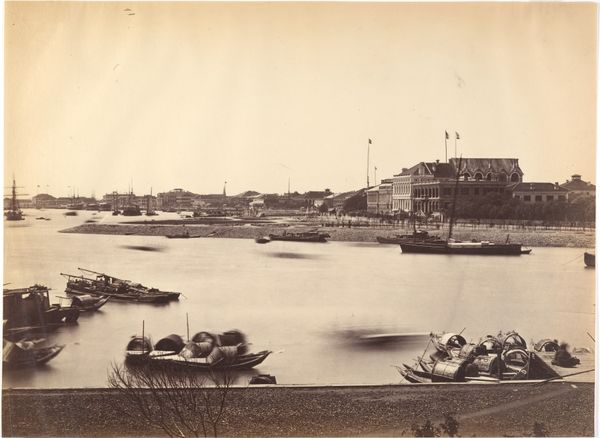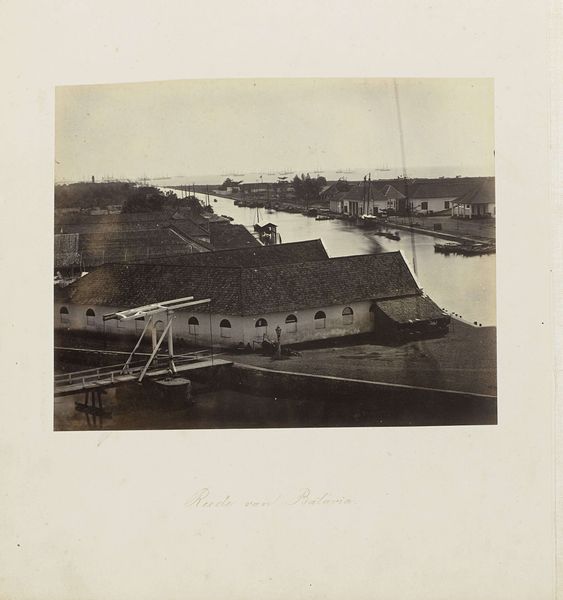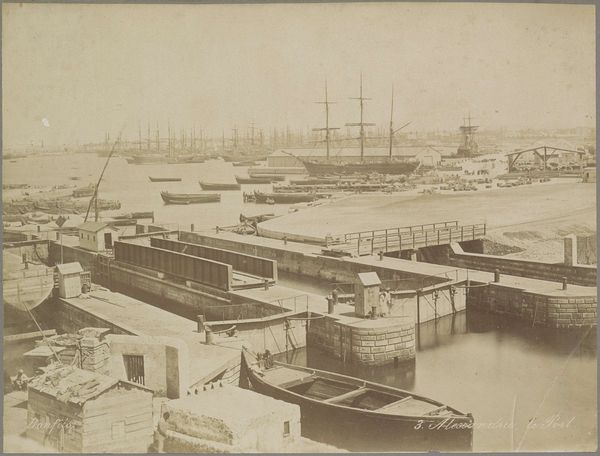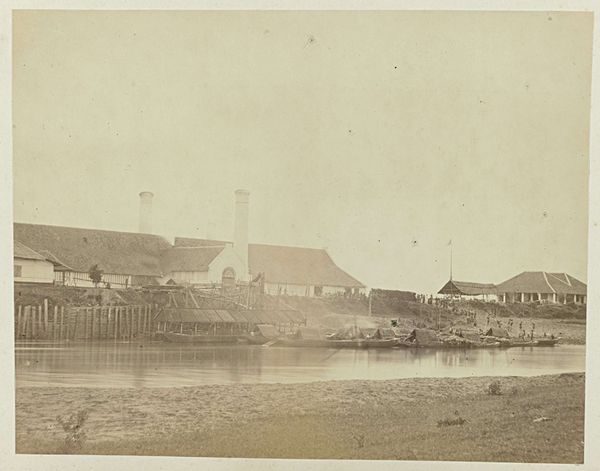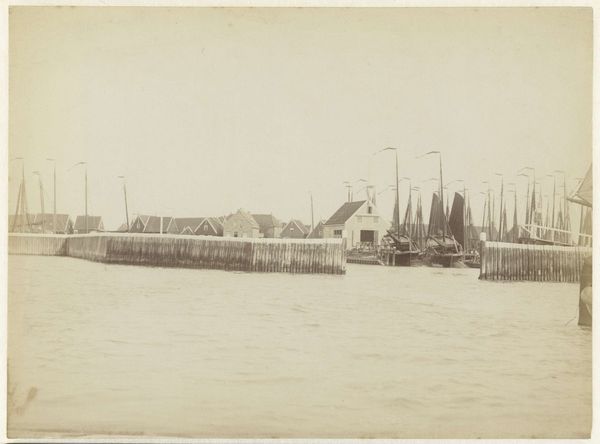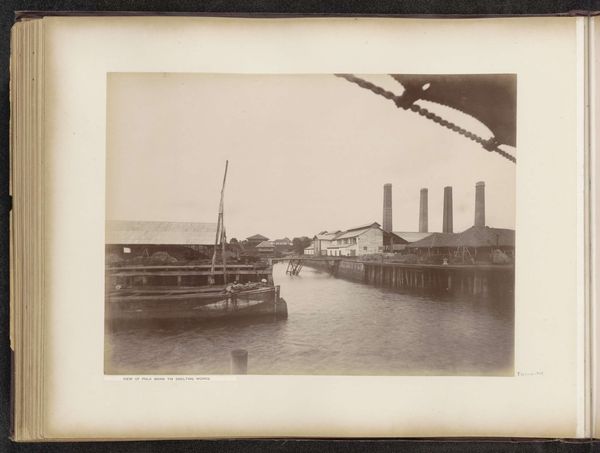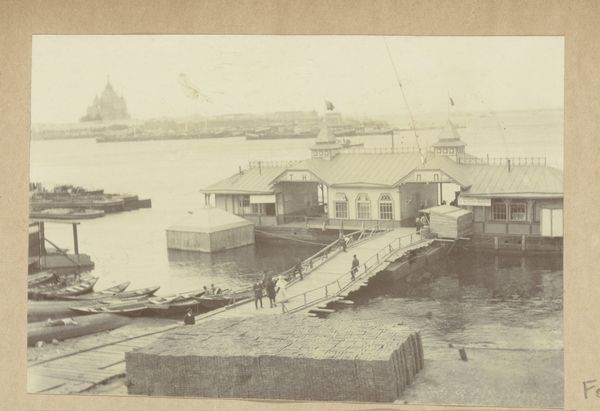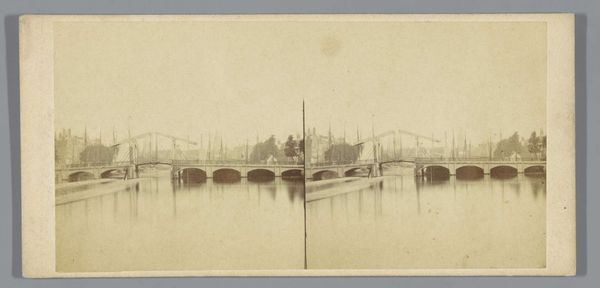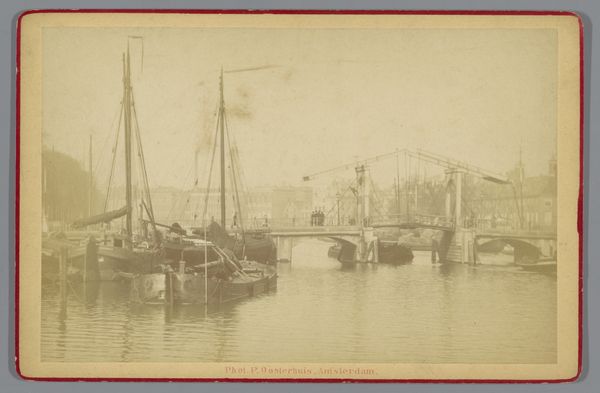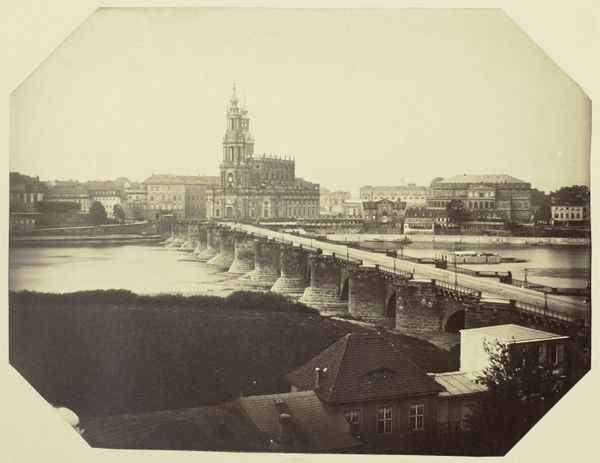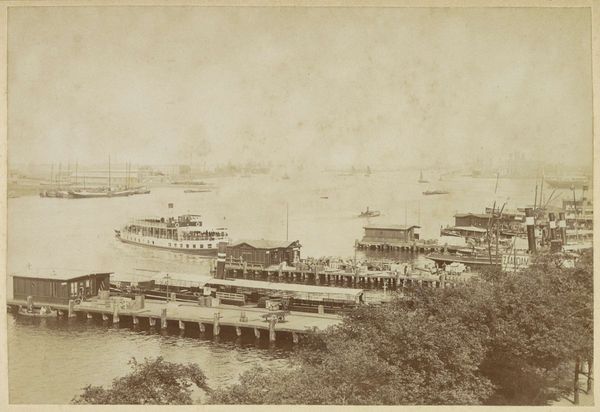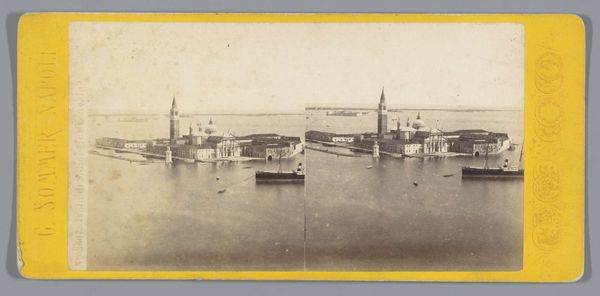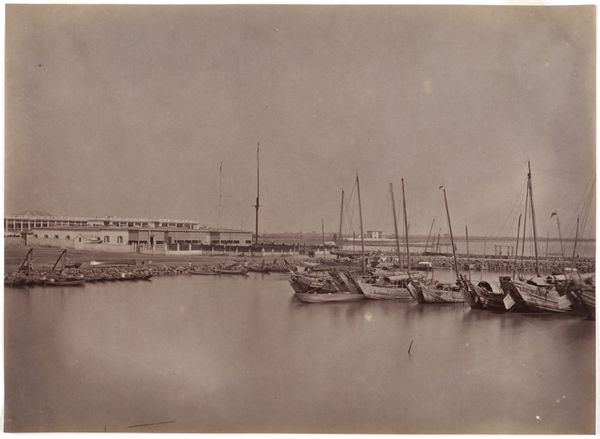
photography, photomontage
#
landscape
#
outdoor photograph
#
photography
#
historical photography
#
photomontage
#
19th century
#
cityscape
Dimensions: height 190 mm, width 240 mm
Copyright: Rijks Museum: Open Domain
Curator: This photomontage, created between 1865 and 1870 by Woodbury & Page, captures a serene, yet ordered cityscape known as Havenkanaal en de Boom te Batavia. Editor: It strikes me immediately as a very rigid, almost sterile depiction of what should be a lively port. The tones are muted, the composition highly structured—it feels emotionally quite distant. Curator: The technical aspect is intriguing. Observe how they have painstakingly assembled separate photographic negatives. Notice the detail afforded to linear perspective as it is created using high vantage points. Semiotically, it demonstrates both precision and the limits of photographic technology at that time. Editor: Yet, that precision belies a deeper narrative of colonial power. Batavia, now Jakarta, was at the heart of the Dutch East Indies. This "order" isn't natural—it’s imposed. We must remember the forced labor, the exploitation required to build and maintain such infrastructures. Even the calm waters suggest control. Who profits from this calm? Who suffers? Curator: I agree that one must read the work contextually; however, consider the very materiality. It’s albumen print on cardboard, a delicate medium. The formal constraints shaped the aesthetic choices just as the cultural circumstances did. Editor: The medium amplifies the historical distance, doesn't it? But I find it vital to recognize the visual markers of occupation—the regimented buildings, the implication of shipping lanes geared toward resource extraction—and read them as evidence of a structure violence enacted against the people and place. Curator: The photographic perspective privileges a particular visual ordering that requires careful critical reflection, and that also reveals certain elements about this historic landscape through unique techniques. Editor: Precisely! It urges us to recognize the colonial gaze embedded within the photographic act, asking critical questions about whose stories are omitted and why that is so. I encourage the listeners to dwell on that colonial gaze. Curator: Reflecting on the photograph’s formal structure and composition enriches and deepens an informed sense of both social reality and material production in 19th century colonial Indonesia. Editor: For me, examining "Havenkanaal en de Boom te Batavia" provokes a discussion about not only representing the past but actively decolonizing our ways of seeing. It prompts essential questions about equity, history, and ethics within and outside of the museum.
Comments
No comments
Be the first to comment and join the conversation on the ultimate creative platform.
